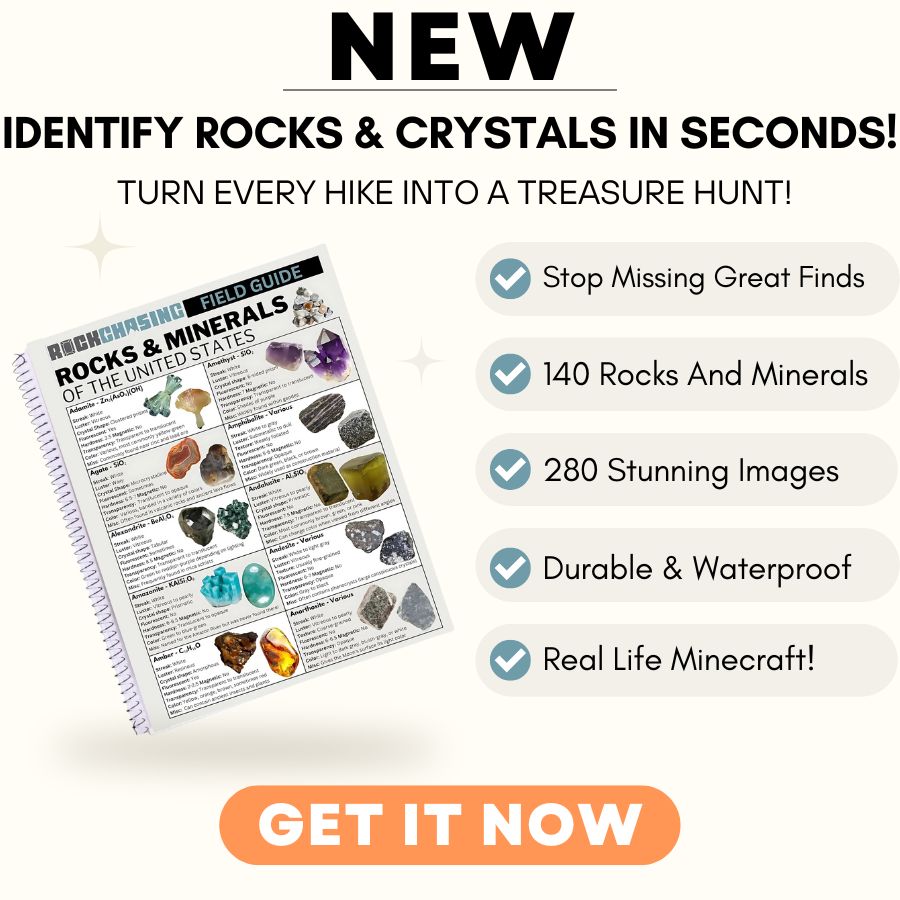Finding crystals can be a rewarding adventure, offering a unique way to explore the natural beauty and geology of the region. Whether you’re a seasoned rockhound or just getting started, knowing where to look is key to uncovering these hidden treasures.
In this state, a variety of locations provide opportunities to discover different types of crystals. From rocky outcrops in the mountains to stream beds that carry sparkling surprises, each area offers its own unique finds for those willing to search.
We can help you get started with some places you can explore for crystals below!
Crystals you can find in the US
The United States offers a wide range of crystals that reflect its diverse geology. From vibrant gems to more subtle mineral formations, there’s something to discover in nearly every region.
Calcite
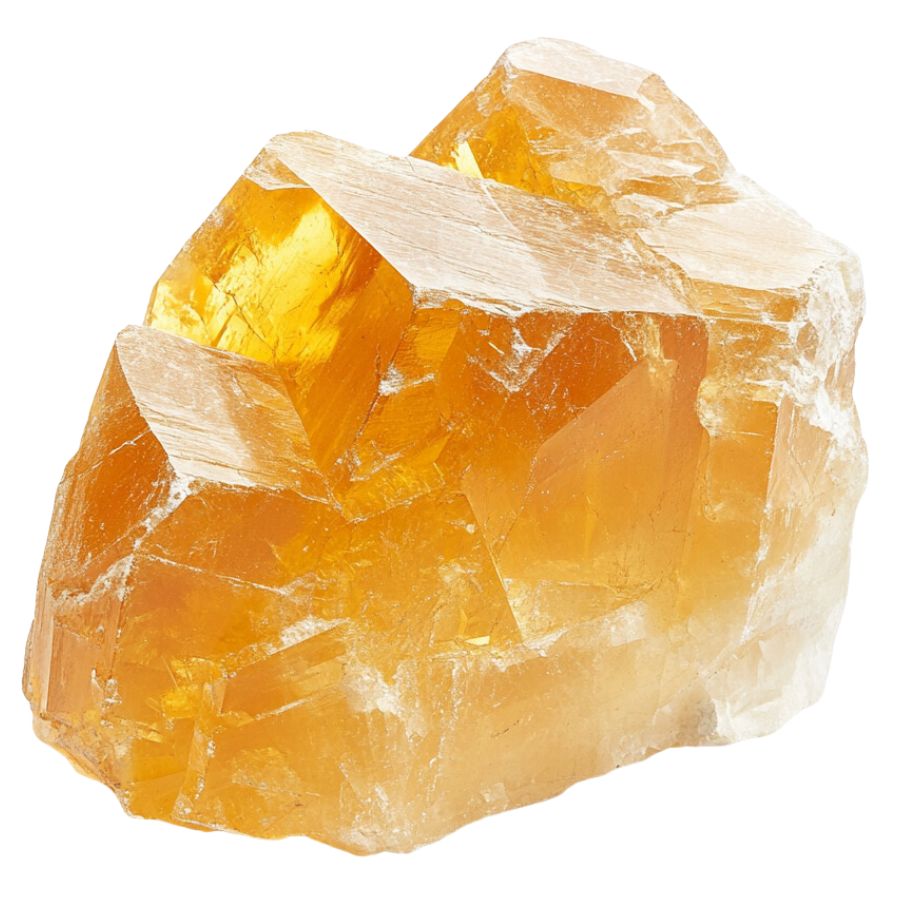
With a variety of forms and a unique property of double refraction, calcite allows objects viewed through the crystal to appear doubled. This mineral can appear in a spectrum of colors, with pure forms typically being transparent or white.
In addition, calcite reacts vigorously with acids, which aids in distinguishing it from other minerals. It also frequently contributes to the structure of sedimentary rocks such as limestone.
Gypsum
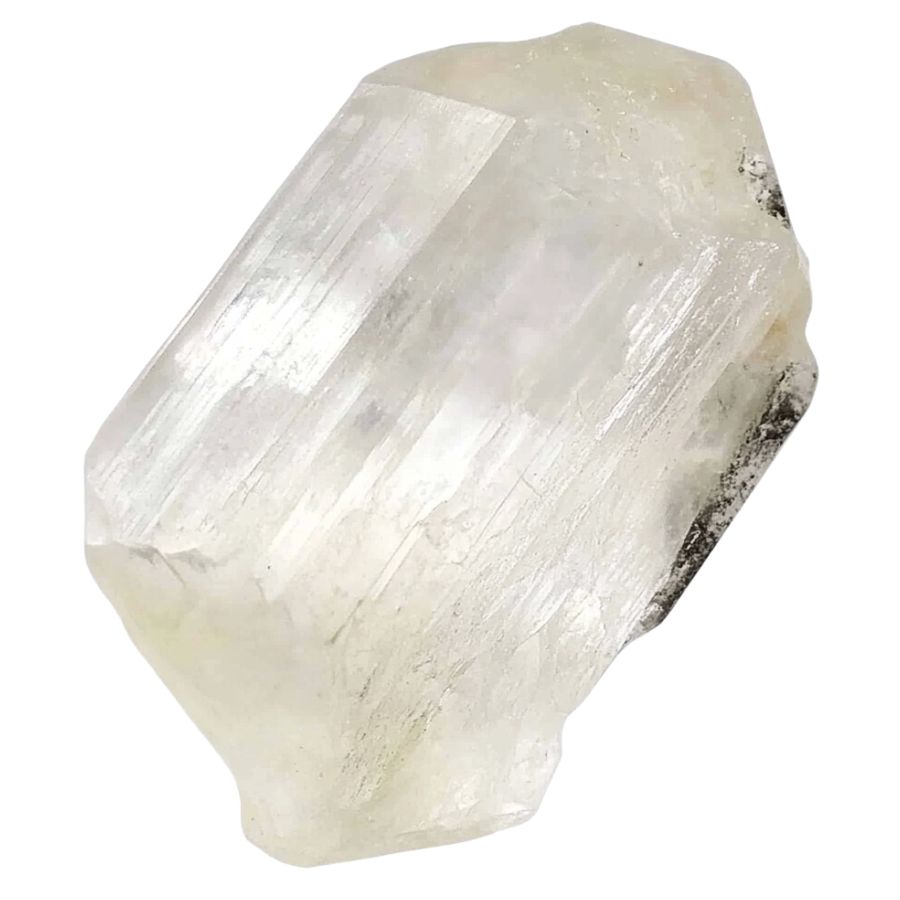
Gypsum’s notable softness allows it to be easily scratched with just a fingernail, often presenting as white or very light-colored in its pure form.
It manifests in both crystalline forms, like selenite, and massive forms such as alabaster, making it versatile in use and appearance.
Gypsum is also essential in the construction industry and is a key component in the manufacture of plaster and drywall.
Fluorite
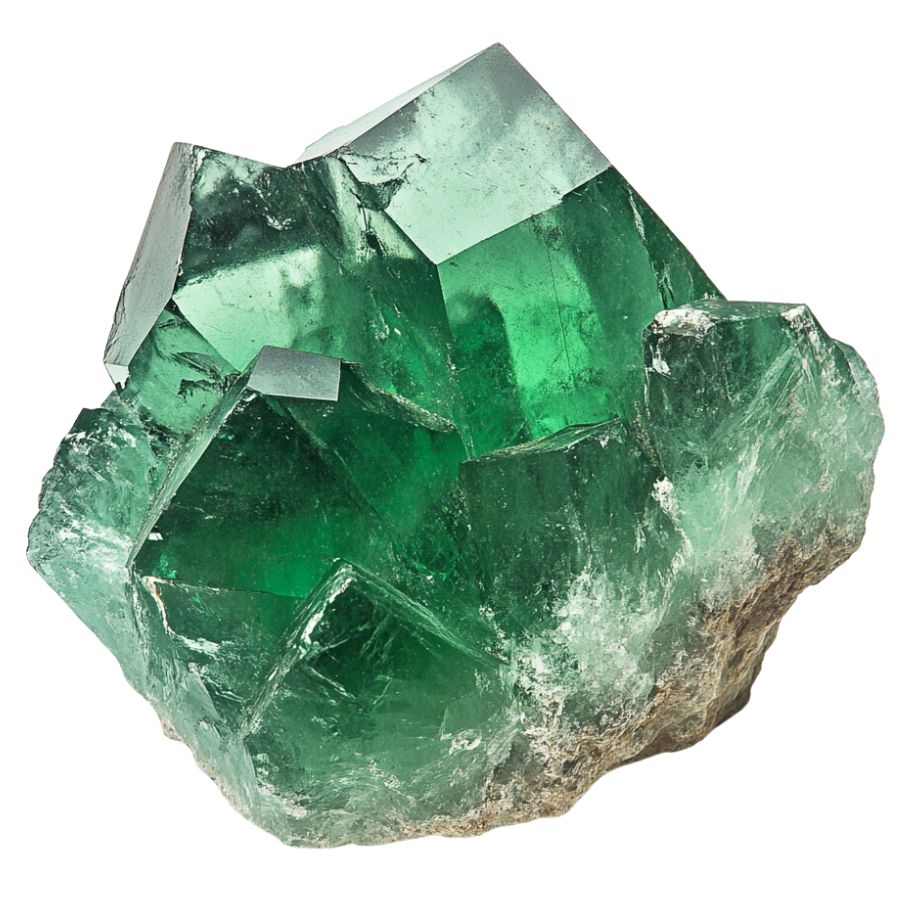
Fluorite comes in a wide range of vibrant colors, including purples, greens, blues, and yellows, and is known for forming in well-defined cubic crystals.
Beyond this, fluorite exhibits fluorescence under ultraviolet light! It can also be used in various industrial applications, including as a flux in steelmaking.
Galena
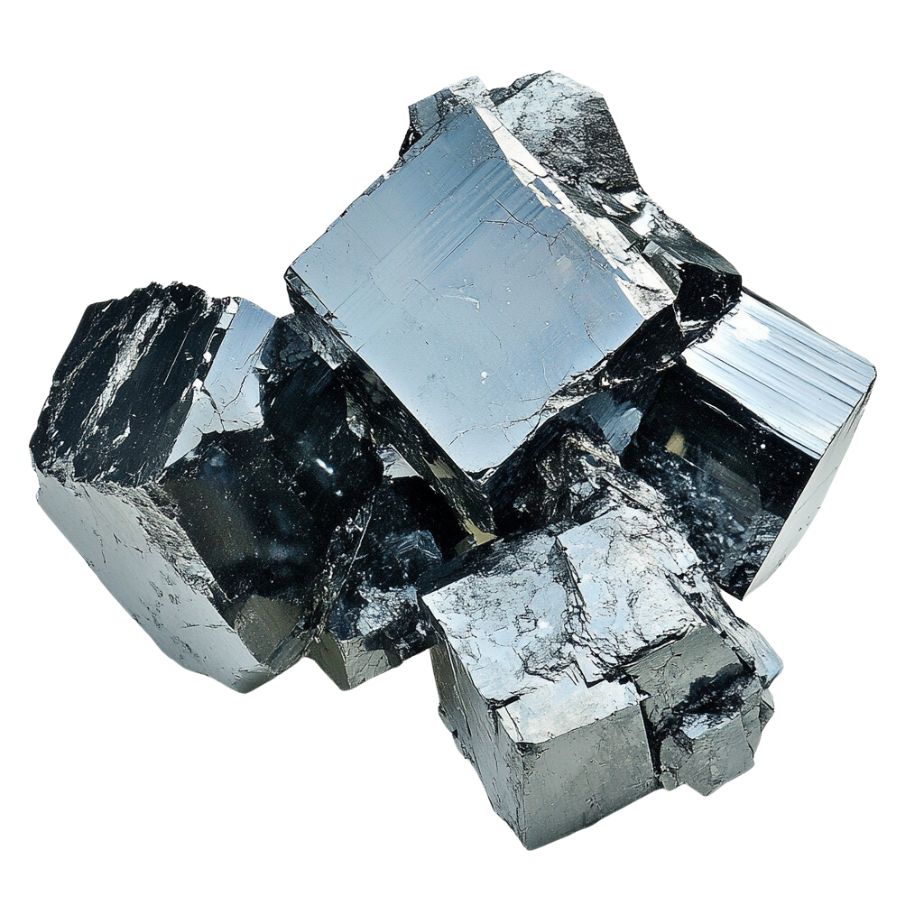
Galena distinguishes itself with a metallic luster and high density, typically found in a cube-like form. It serves as the primary ore of lead, making it important in the metal industry, while its shiny, silver color attracts collectors.
Not only does its appearance make it a subject of interest, but its weight and texture provide tangible lessons in mineral density and metallic properties. Galena also often contains traces of silver, adding to its commercial and educational value.
Corundum
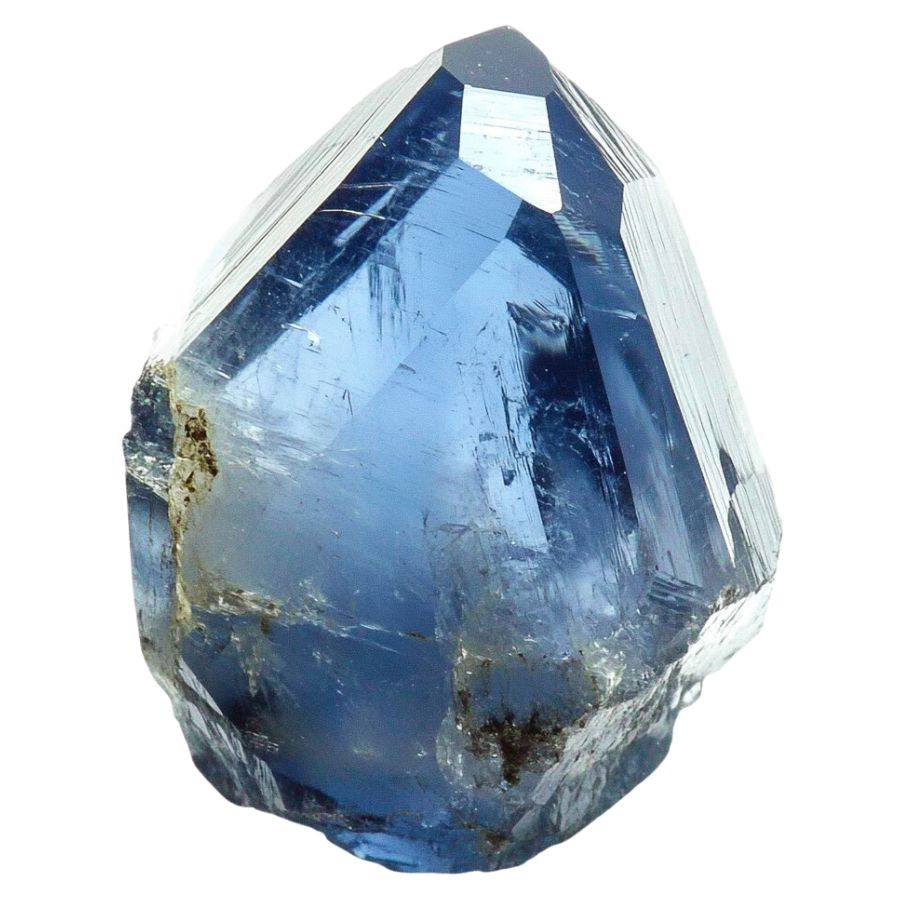
Corundum is a mineral that comes in a variety of colors, though it is typically transparent or gray. Its most famous forms are sapphires and rubies, which are prized for their vibrant blue and red hues.
The mineral is known for its remarkable hardness, ranking just below diamond on the Mohs scale. This durability makes corundum ideal for industrial abrasives and cutting tools, as well as a popular choice for fine jewelry.
Quartz
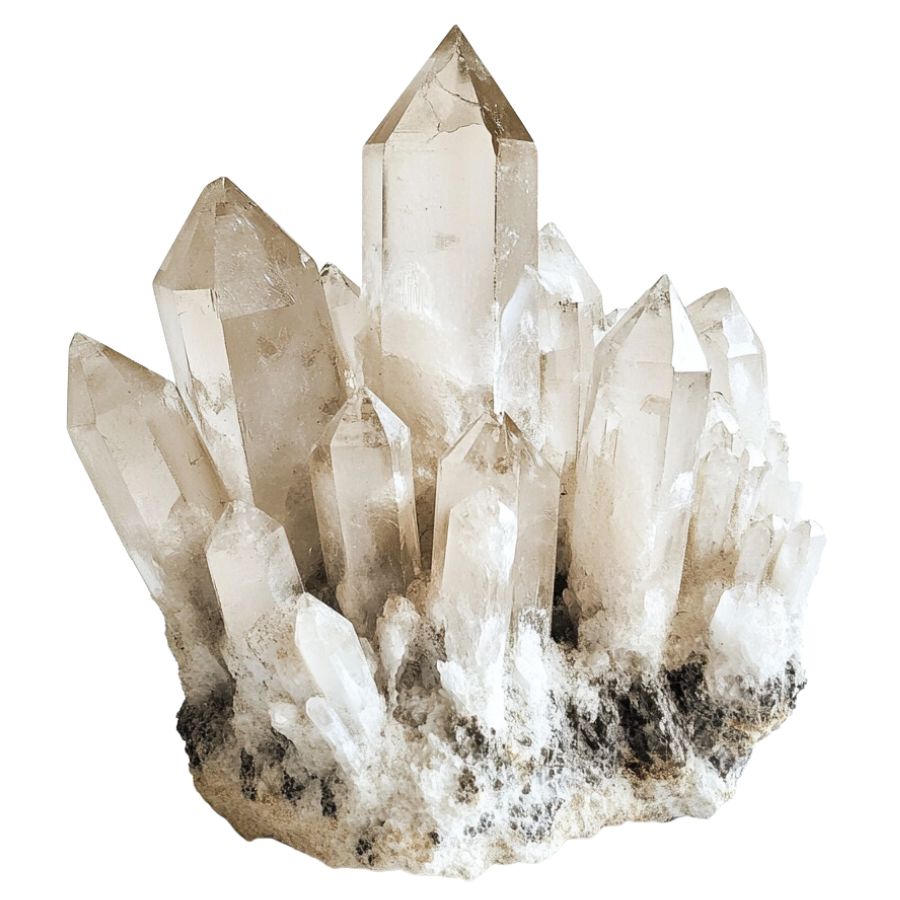
Quartz is among the most common minerals in the Earth’s crust and is prized for its durability and variety. It forms in a wide range of colors and types, from clear rock crystal to purple amethyst.
The mineral is notable for its hardness and durability, which contribute to its use in a variety of applications. Quartz is also popular in the manufacturing of electronics and watches due to its piezoelectric properties, which allow it to convert mechanical pressure into electrical energy.
Pyrite
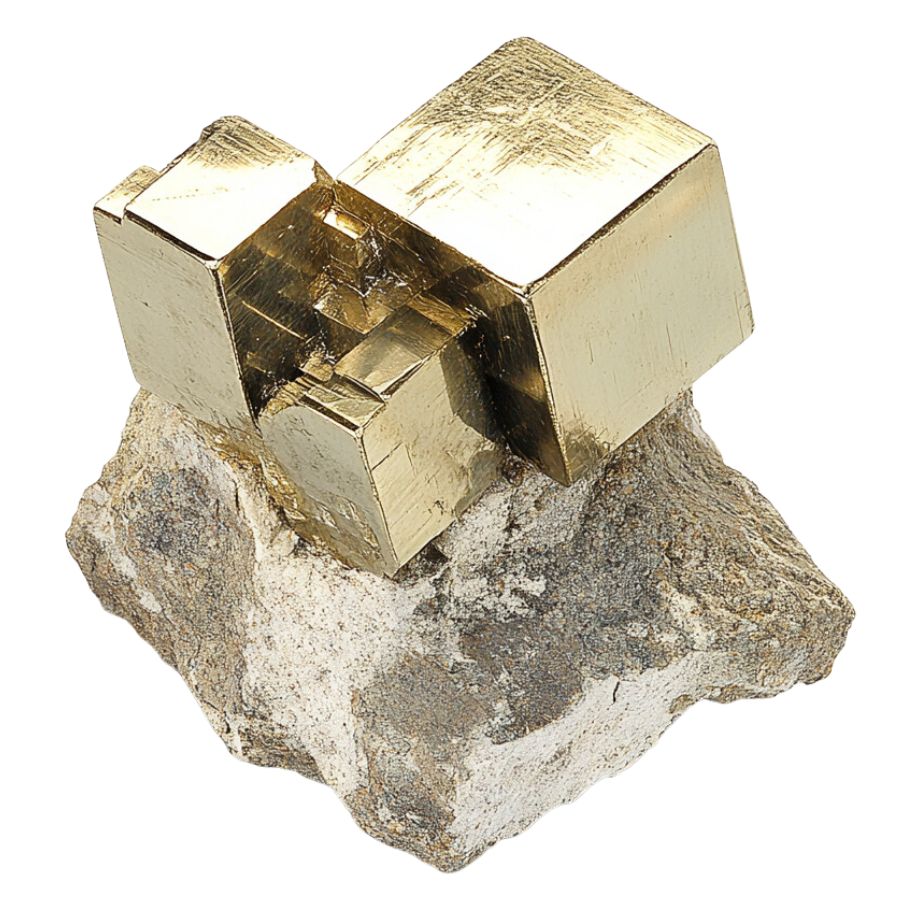
Often mistaken for gold due to its metallic luster and pale brass-yellow hue, pyrite is known colloquially as “fool’s gold.” Its characteristic cube-shaped crystal formations look man-made but are actually completely naturally formed!
Pyrite also has historical importance in producing sulfur dioxide for sulfuric acid production.
Rhodochrosite
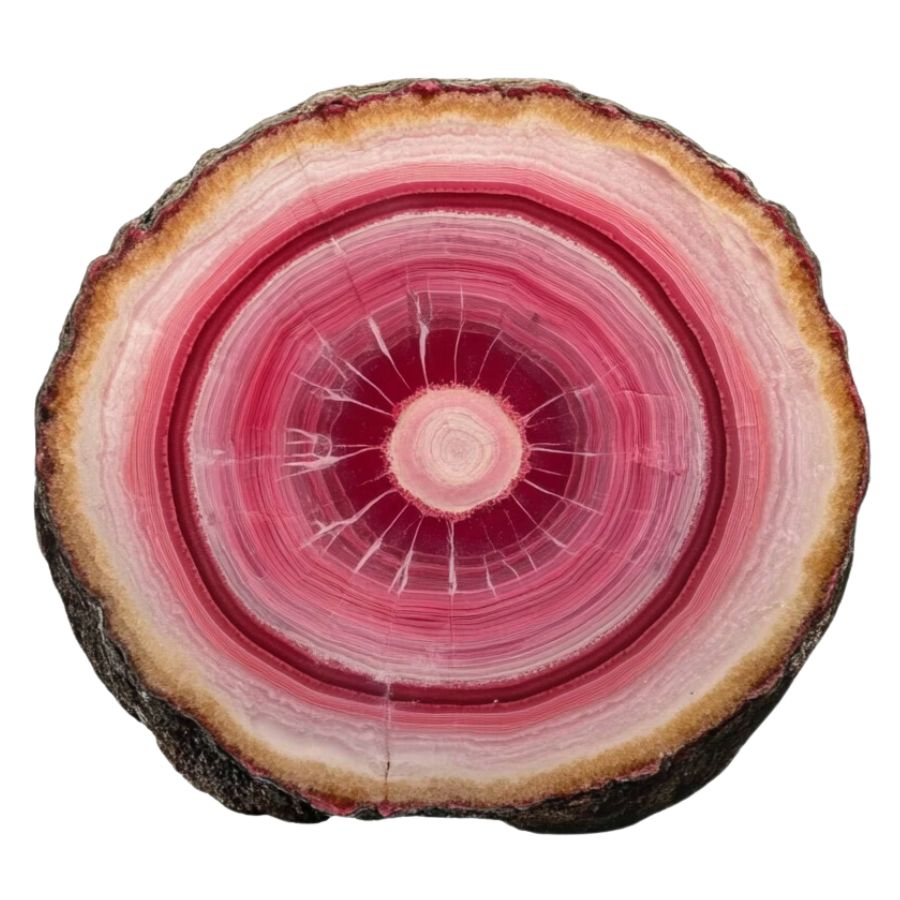
Rhodochrosite stands out with its rich pink and red hues, making it highly desirable as both a mineral specimen and a gemstone.
It typically forms in layered or stalactitic structures, with bands of colors that showcase how it grew over millions of years.
Beyond its beauty, rhodochrosite is significant as the main source of manganese, an essential element used in metal alloys.
Rhodonite
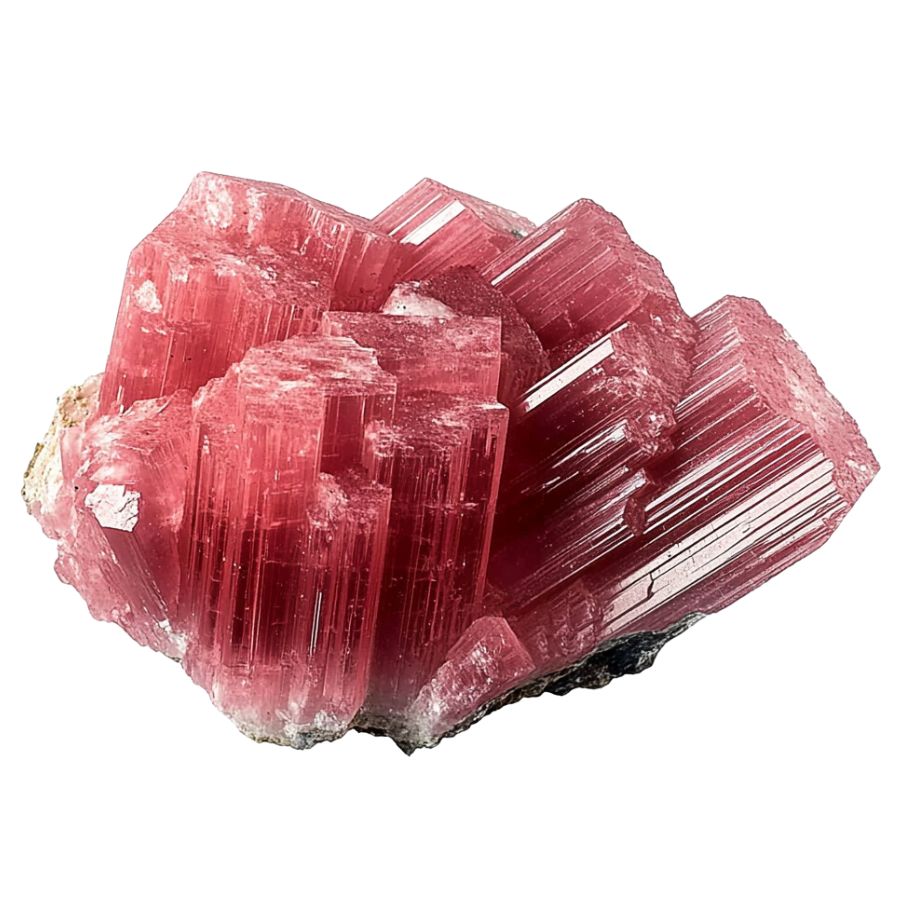
Appreciated for its deep pinks and reds, often complemented by black manganese oxide veins, rhodonite presents a dramatic appearance. It is typically found in metamorphic rocks and is used both as an ornamental stone and in jewelry.
In geology, rhodonite is significant for its role in metamorphic processes and its association with other manganese-rich minerals. It can be found in metamorphosed sedimentary rocks and is sometimes used as an indicator of the presence of manganese deposits.
Vivianite
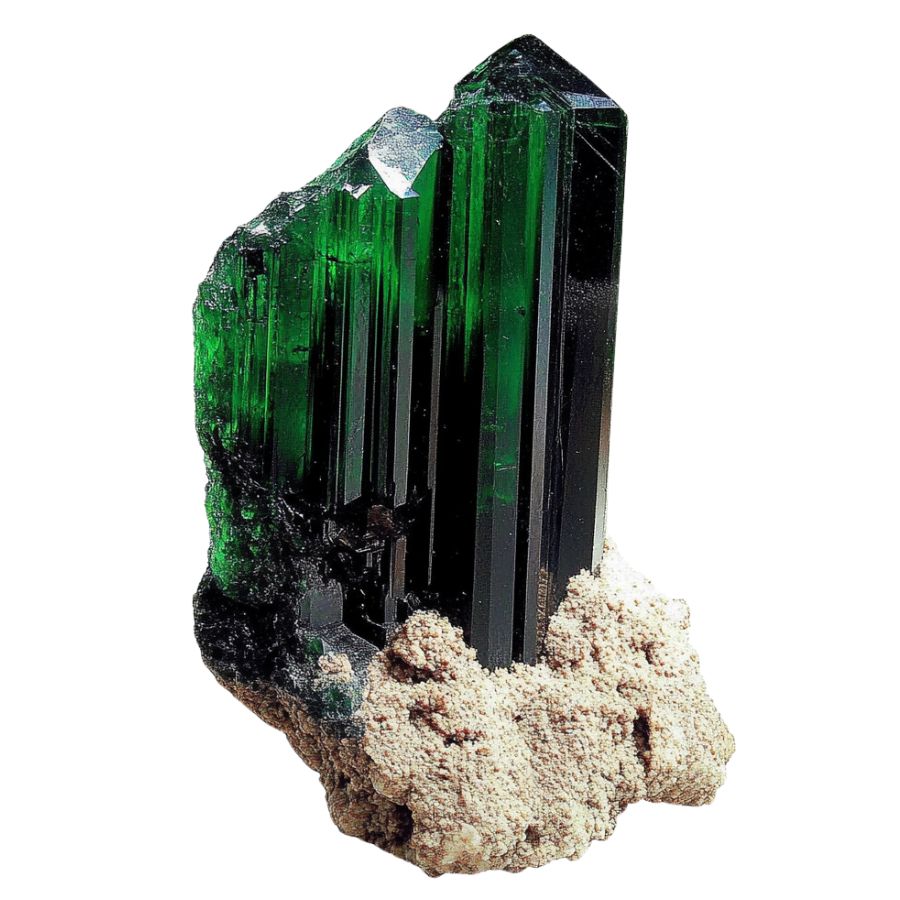
Vivianite, an iron phosphate mineral, emerges in low-oxygen environments like peat bogs or iron-rich deposits. Its striking blue to green color, which can change to a lighter shade over time due to oxidation, makes it a distinctive mineral.
Found in various geological settings, vivianite provides clues about the local conditions and the presence of phosphate deposits.
The Types of Maryland Crystals You Can Find
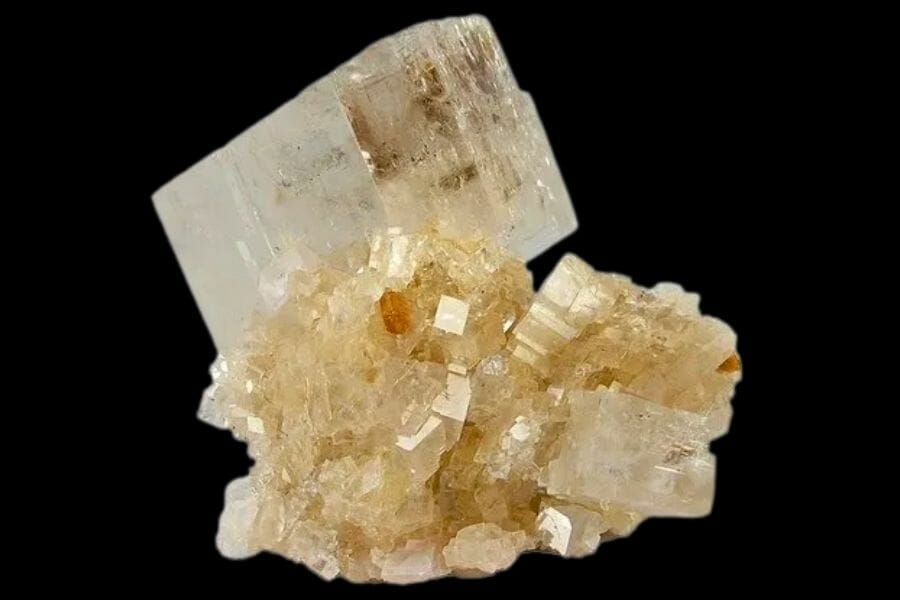
Maryland is rich in rock formations that have produced a wide range of crystals with beauty that is truly undeniable. From the rolling hills of the Piedmont to the rugged terrain of the Appalachians, our state is a treasure trove of varied kinds of crystals waiting to be discovered. Here’s a list of what you might find here:
Rare crystals found in Maryland
- Amber
- Amethyst
- Aquamarine
- Magnesite
- Serpentine
- Tremolite
More common crystals found here
- Agate (moss)
- Apatite
- Azurite
- Calcite
- Chrysocolla
- Copper
- Covellite
- Epidote
- Fluorite
- Garnet
- Hematite
- Jasper
- Malachite
- Onyx
- Pyrite
- Quartz
- Rutile
- Tourmaline
What rough crystals look like
When you’re out looking for crystals on your own it’s important to know what you’re looking for. This is what you need to look out for:
Look for exteriors like this
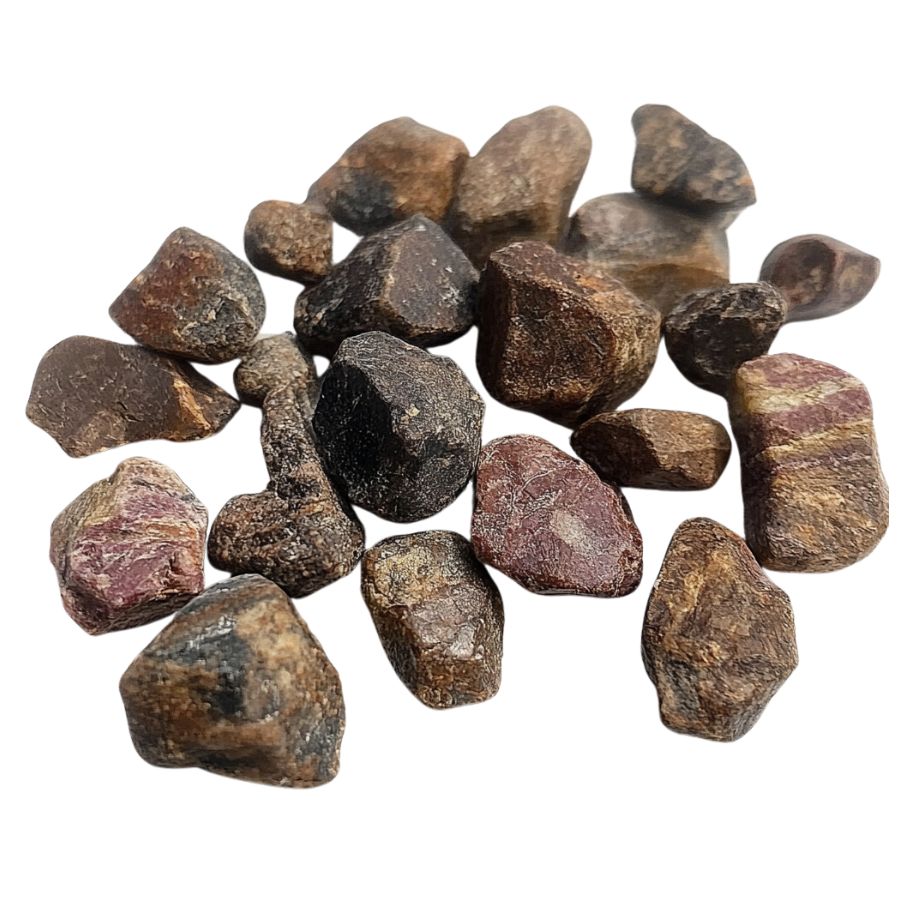
When you’re out searching for crystals in the wild, it’s essential to keep in mind that what you find won’t look like the polished stones you see in stores. One important tip is to consider what certain crystals look like in their raw, natural form.
Without the shine and smooth finish, crystals might appear rough, with jagged edges or earthy tones masking their true beauty. Understanding this can help you spot potential finds that might otherwise be overlooked.
Examine the crystal structure and shape
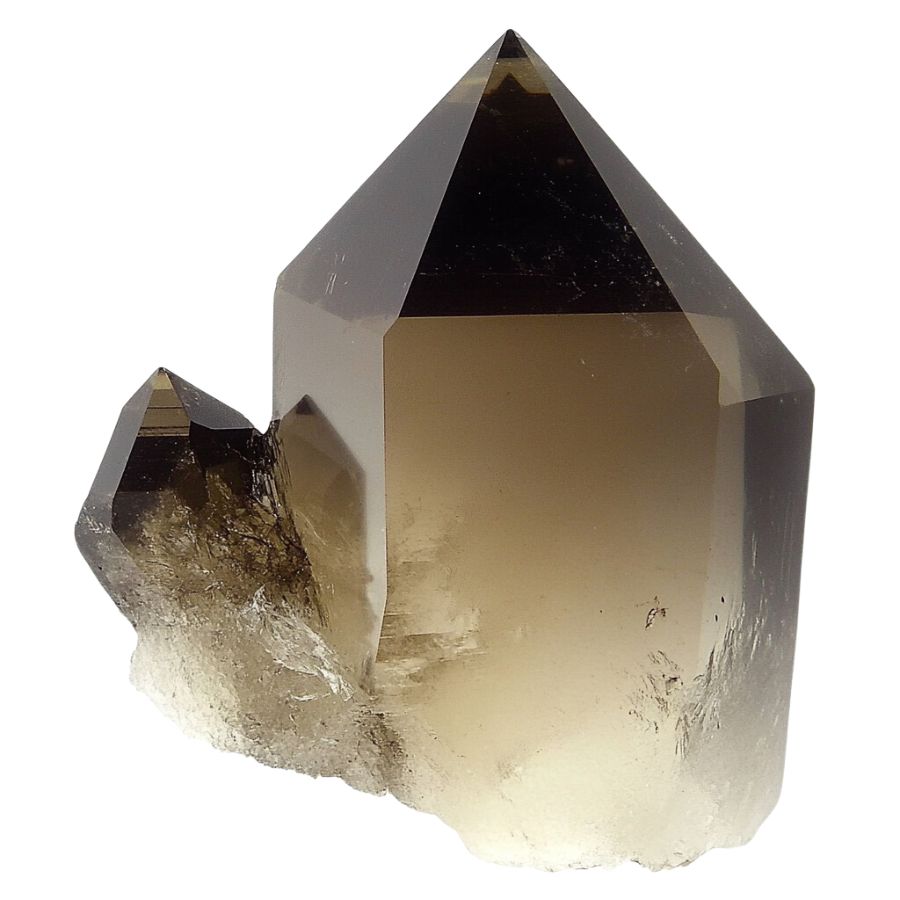
Crystals often form in specific geometric patterns that can be key to identifying them. For example, quartz is known for its hexagonal prisms, while halite typically forms cubic shapes.
By recognizing these distinct patterns, you can differentiate between various types of crystals and better understand what you’ve found.
Observe color
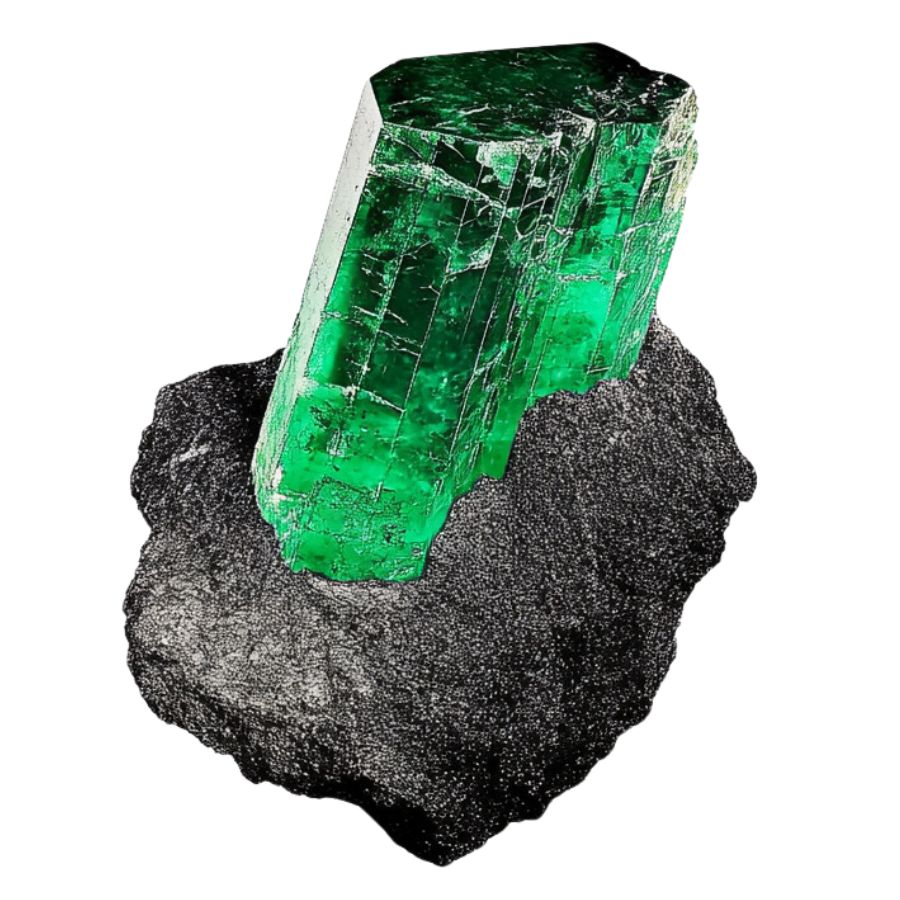
Some crystals are known for their distinct hues, like the deep purple of amethyst or the vibrant green of emerald. However, not all crystals will have strong colors; some may be clear or only slightly tinted.
Check the luster
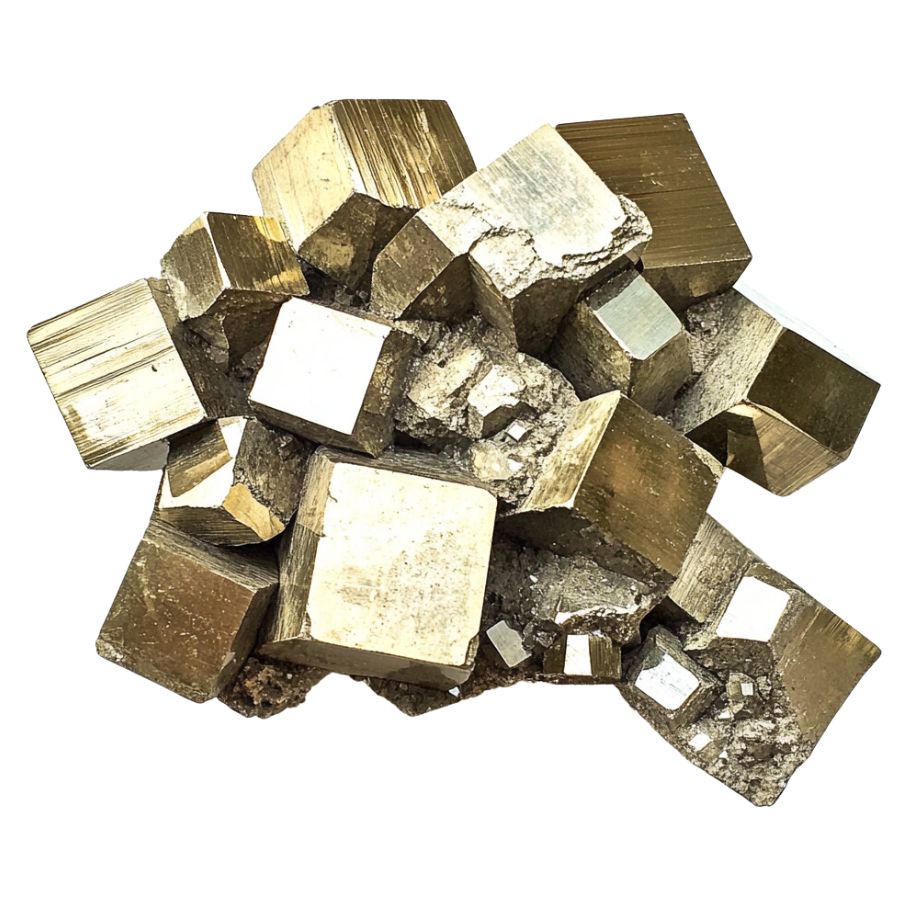
Luster refers to how a crystal’s surface interacts with light. Some crystals might have a shiny, glassy luster, while others may appear metallic or dull. This characteristic can help you determine the type of crystal you’ve found.
However, it’s important to remember that luster isn’t always obvious right away. In some cases, a crystal’s true luster will only become apparent after it’s been cleaned or polished, so keep this in mind as you examine your finds.
Evaluate the transparency
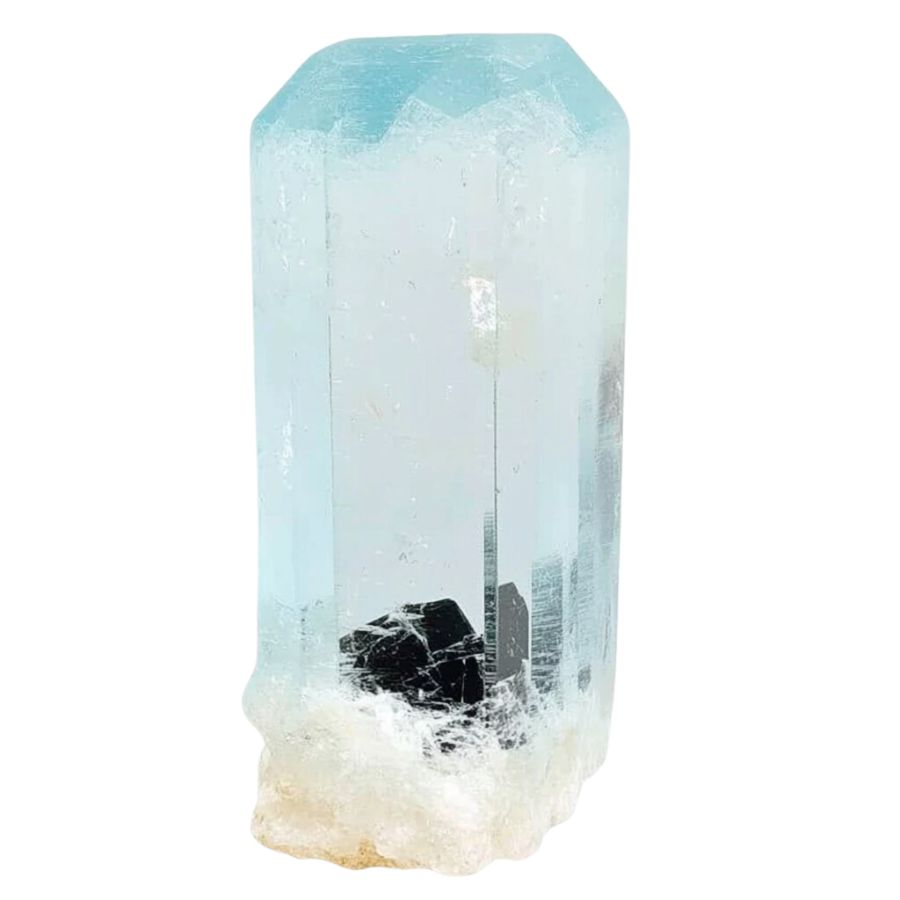
Pay close attention to how much light passes through the crystal. Some crystals are completely clear, allowing light to pass through easily, while others may be opaque and block light entirely.
You might also encounter crystals with translucent edges but opaque centers. These variations in transparency can offer valuable clues about the type of crystal you’ve found, making it easier to identify and appreciate your discovery.
A Quick Request About Collecting
Always Confirm Access and Collection Rules!
Before heading out to any of the locations on our list you need to confirm access requirements and collection rules for both public and private locations directly with the location. We haven’t personally verified every location and the access requirements and collection rules often change without notice.
Many of the locations we mention will not allow collecting but are still great places for those who love to find beautiful rocks and minerals in the wild without keeping them. We also can’t guarantee you will find anything in these locations since they are constantly changing.
Always get updated information directly from the source ahead of time to ensure responsible rockhounding. If you want even more current options it’s always a good idea to contact local rock and mineral clubs and groups
Tips on where to look
Having a better idea of where to look can greatly narrow down your search and increase your chances of finding crystals. By focusing on environments where crystals are likely to be exposed, you can spend less time searching and more time discovering.
Outcrops and Exposed Rock
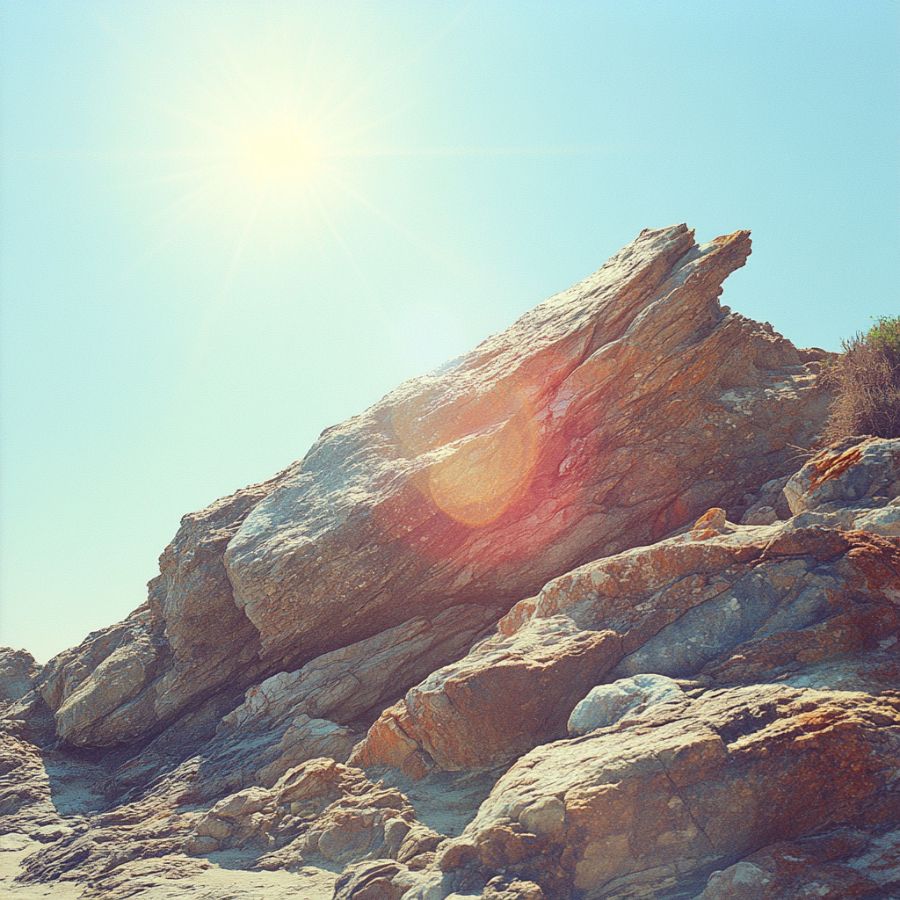
Rocky outcrops are prime locations for finding crystals and minerals. Search along the edges of outcrops, particularly where erosion has worn away the surrounding soil, revealing the rock underneath.
Pay close attention to any visible cracks, crevices, or small cavities within the outcrop, as these are often where crystals develop and can be extracted with minimal effort.
Stream Beds and Gravel Deposits
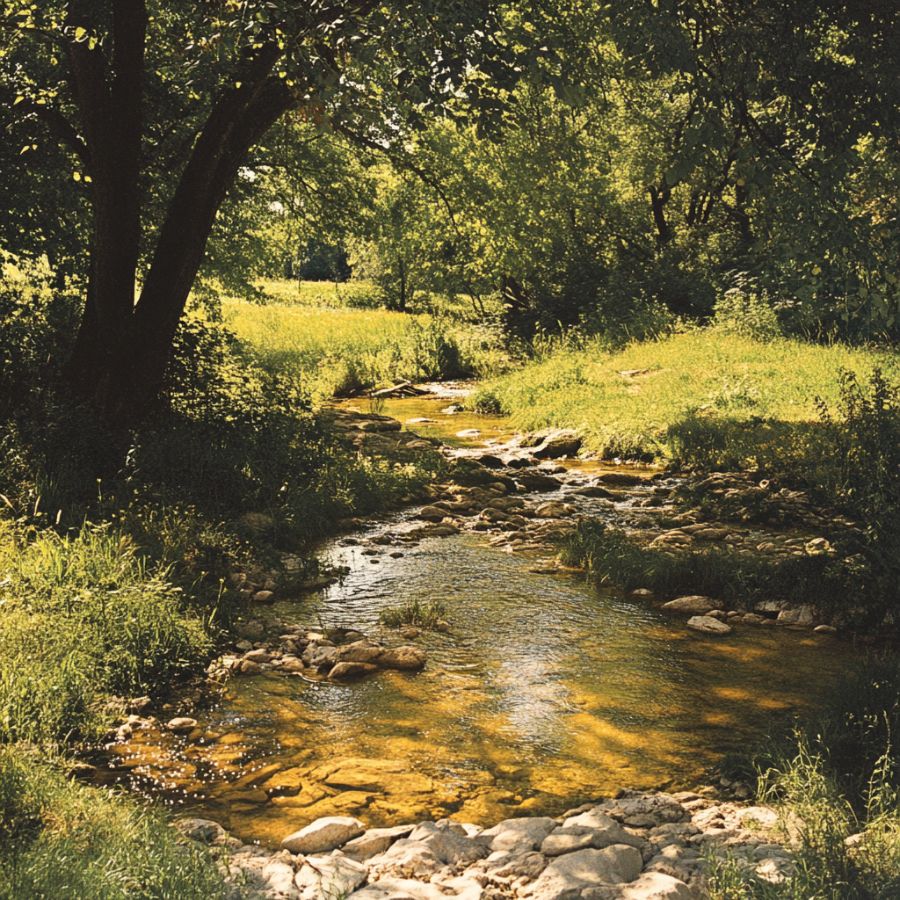
Stream beds are dynamic environments where water flow constantly shapes the landscape. Over time, water can erode rocks upstream, breaking them down and carrying mineral fragments, including crystals, downstream.
When searching in these areas, look for spots where the current has slowed, such as bends in the stream or areas behind large rocks, as these are prime locations for deposits.
Quarries and Mines
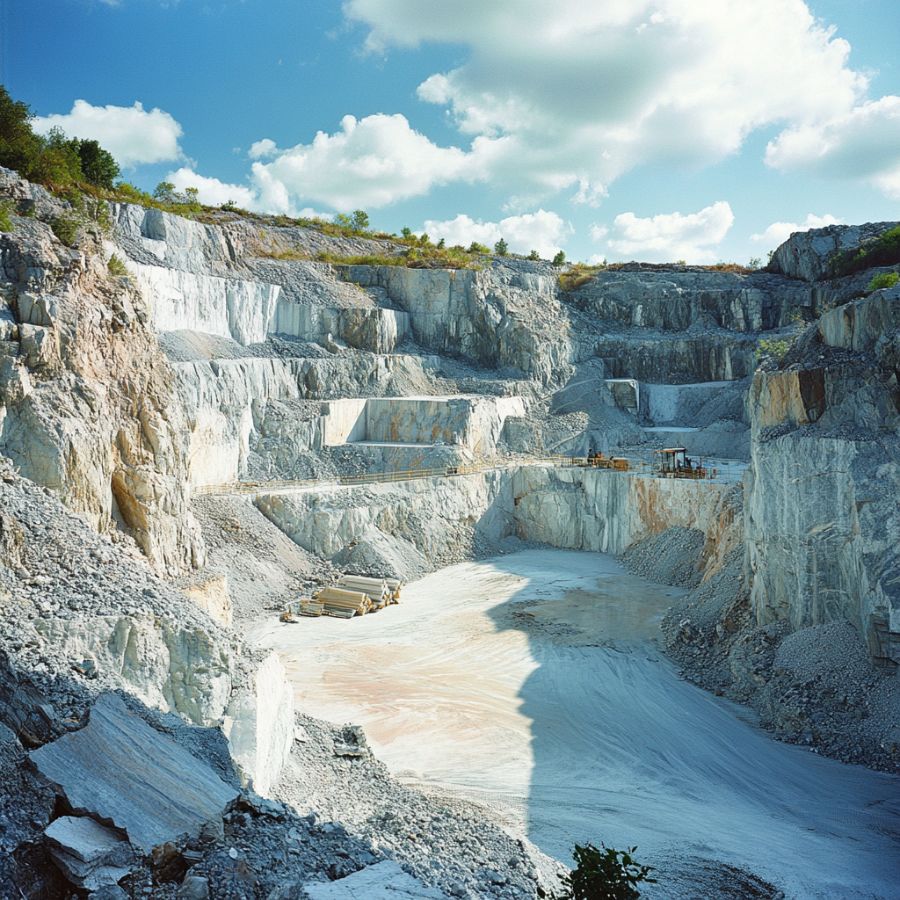
Quarries and mines are excellent places to search for crystals because they expose deep layers of rock that would otherwise be hidden beneath the surface. These sites often contain a variety of minerals and crystals that have been brought to the surface during excavation.
Pay attention to tailings piles, where waste rock is discarded, as they often contain overlooked or broken crystals. Always prioritize safety when exploring these areas and ensure that you have permission to search.
Road Cuts and Construction Sites
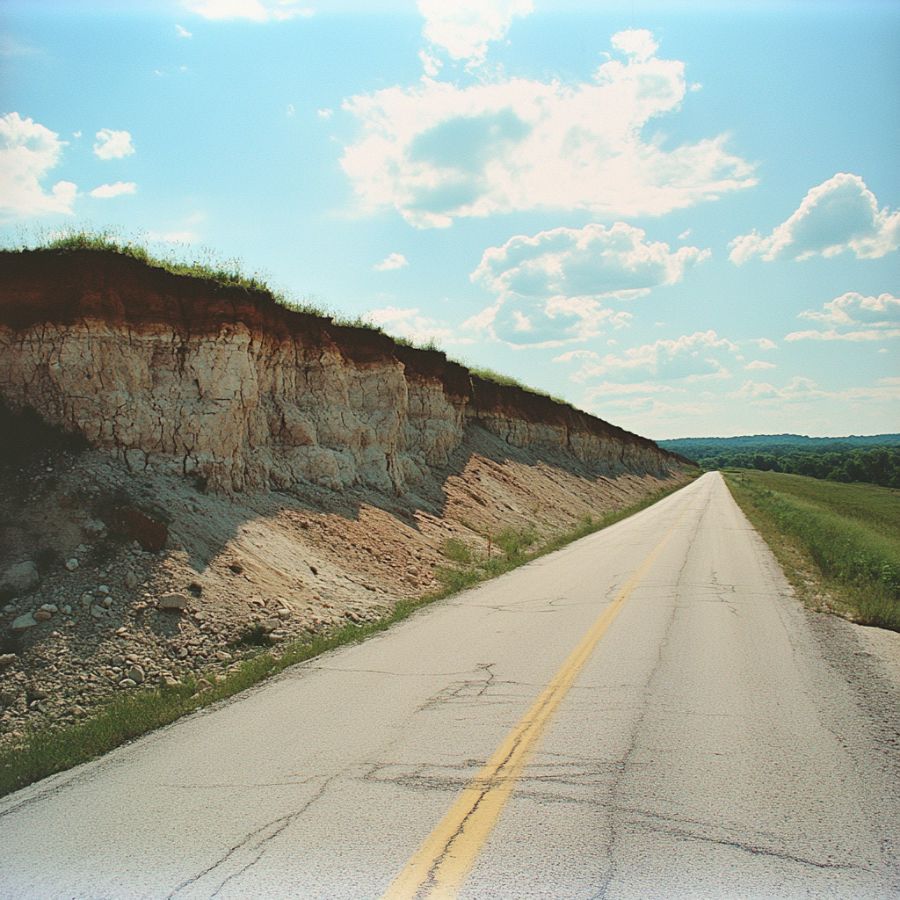
As roads are cut through hillsides or construction projects dig deep foundations, layers of rock and soil that have been undisturbed for millions of years are suddenly exposed.
Look for freshly exposed rock faces, especially where blasting has occurred, as this can create fissures or expose pockets filled with crystals. Be cautious around active construction sites, and always seek permission before exploring.
Mountainous Areas
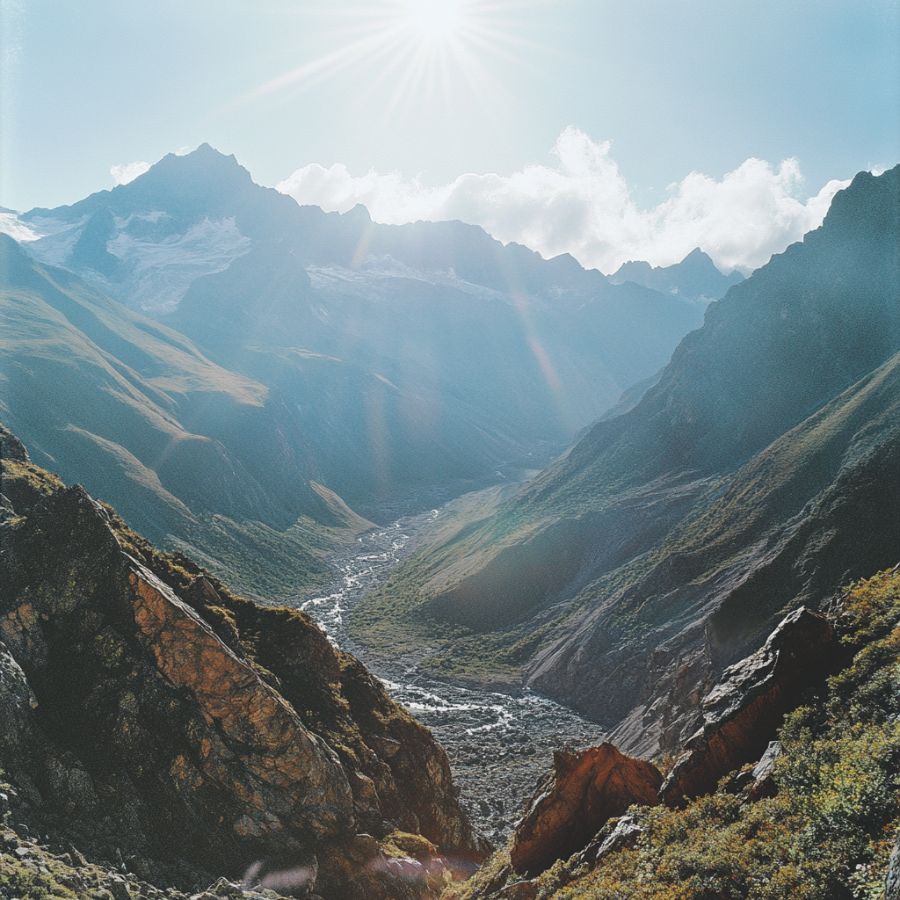
In mountainous regions, erosion caused by wind, rain, and ice can wear away the softer rock, exposing harder crystals that have formed within. Focus on weathered and broken rock formations.
Look for scree slopes, where loose rock has accumulated at the base of cliffs. Additionally, areas near fault lines or volcanic vents are particularly promising, as they often have a higher concentration of minerals.
DON'T MISS OUT ON ANY GREAT FINDS!
While you're out searching for Crystals you're going to find A LOT of other interesting rocks and minerals along the way. The last thing you want to do is toss out something really interesting or valuable. It can be easy to misidentify things without a little guidance.
We've put together a fantastic field guide that makes identifying 140 of the most interesting and valuable rocks and minerals you will find REALLY EASY. It's simple to use, really durable, and will allow you to identify just about any rock and mineral you come across. Make sure you bring it along on your hunt!
Maryland Crystal Mining Laws And Regulations
Crystal mining is legal in Maryland if you just follow the local collecting laws of our state, especially the ones implemented by the Maryland Department of Natural Resources (DNR).
As a general rule, you should obtain any necessary permits and permissions from concerned government agencies before proceeding to any exploration or digging efforts for crystals.
- The extensive local experience and understanding of our team
- Input from multiple local crystal hunters and crystal collecting groups
- The accessibility of the crystal mining locations
- Safety and potential hazards when collecting
- Private and public locations
- A desire to include locations for both experienced crystal hunters and those who are just starting out
Using these weights we think we’ve put together the best list out there for those who love finding new crystals for our collections!
The Best Locations For Crystal Mining in Maryland
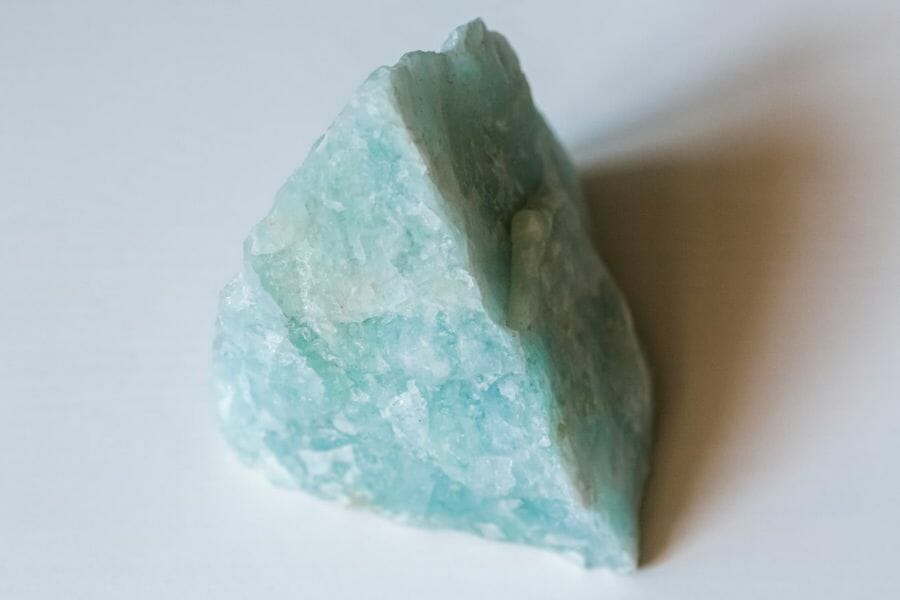
Here are THE BEST locations where you can find Maryland crystals. We had the best success exploring these places and we hope you will, too!
Always Confirm Access and Collection Rules!
Before heading out to any of the locations on our list you need to confirm access requirements and collection rules for both public and private locations directly with the location. We haven’t personally verified every location and the access requirements and collection rules often change without notice.
Many of the locations we mention will not allow collecting but are still great places for those who love to find beautiful rocks and minerals in the wild without keeping them. We also can’t guarantee you will find anything in these locations since they are constantly changing.
Always get updated information directly from the source ahead of time to ensure responsible rockhounding. If you want even more current options it’s always a good idea to contact local rock and mineral clubs and groups
Bare Hills Historic District is Our Favorite Crystal Mine in Maryland
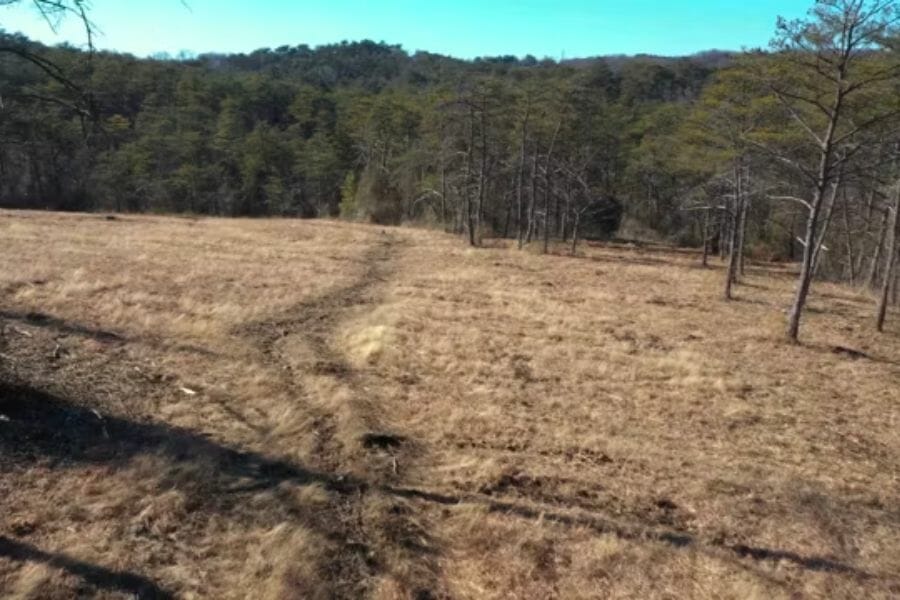
Towson, MD 21209
Located in Baltimore County, Bare Hills Historic District has a rich history and an abundance of crystals just waiting to be discovered. It’s even a great place to mine gems in Maryland!
The history of this place dates back to the 17th century when English settlers arrived in the region. Its name comes from the bare, treeless hills that were a result of farming and logging practices (refer to the picture). Over time, the hills have become overgrown, but the name has stuck.
From a geological perspective, the Bare Hills area is part of the Piedmont Plateau, a region known for its rocky terrain and diverse mineral deposits. The area is comprised of Precambrian gneiss and granite, which have created ideal conditions for crystal formation. That’s why it’s our top recommended crystal hunting place here!
Where we found crystals at Bare Hills Historic District
You will have the best chance to find crystals like Moss Agate, Epidote, Garnet, Malachite, Pyrite, Quartz, Serpentine, and Tremolite in the metropolitan district of Bare Hills Historic District.
DON'T MISS OUT ON ANY GREAT FINDS!
While you're out searching for Crystals you're going to find A LOT of other interesting rocks and minerals along the way. The last thing you want to do is toss out something really interesting or valuable. It can be easy to misidentify things without a little guidance.
We've put together a fantastic field guide that makes identifying 140 of the most interesting and valuable rocks and minerals you will find REALLY EASY. It's simple to use, really durable, and will allow you to identify just about any rock and mineral you come across. Make sure you bring it along on your hunt!
Magothy River
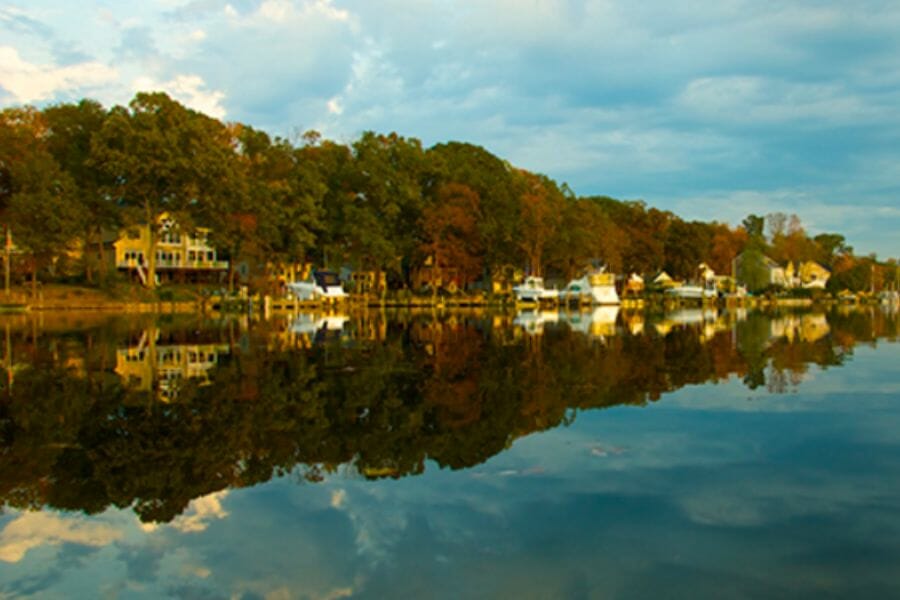
Anne Arundel County, MD
Magothy River has a rich history and diverse geology, making it a prime spot for crystal hunting. For background, the river is named after the Native American tribe that once inhabited the region. It has played an important role in the history of our state, serving as a major transportation route for goods and people.
The Magothy River area is part of the Coastal Plain region, that’s why it’s made up of sedimentary rocks that have been formed over millions of years through the deposition of sand, silt, and other materials. The river’s flow has eroded the surrounding rocks over time, exposing various minerals and crystals.
To find crystals in Magothy River, make sure to obtain necessary permits and to bring appropriate tools for digging, such as a rock hammer, chisel, and gloves.
Where we found crystals at the Magothy River
We had the best of time exploring the area exposures of the Magothy River to find Pyrite and other crystals here. Before you go here, you might ask, “how much do crystals cost?” Read up on it in our article.
Sullivans Cove

552 Ritchie Hwy, Severna Park, MD 21146
Sullivans Cove, located in Calvert County, is home to some truly unique and beautiful crystal specimens. It was used in the 17th century as a port for shipping tobacco.
Sullivans Cove is part of the Chesapeake Bay impact crater, which was formed over 35 million years ago when a meteorite struck the earth. This impact created a unique geological environment that has given rise to a variety of interesting minerals and crystals.
To visit, you can access the cove by boat or kayak, or you can hike in through nearby trails. Though it might sound a lot of work to get here, one thing’s for sure: once you arrive, you’ll have a blast finding crystals!
Where we found crystals at Sullivans Cove
If you explore the lignite seams along the Severn River, especially at Sullivans Cove, you will find bountiful reserves of Amber crystals.
Soldier’s Delight Natural Environment Area
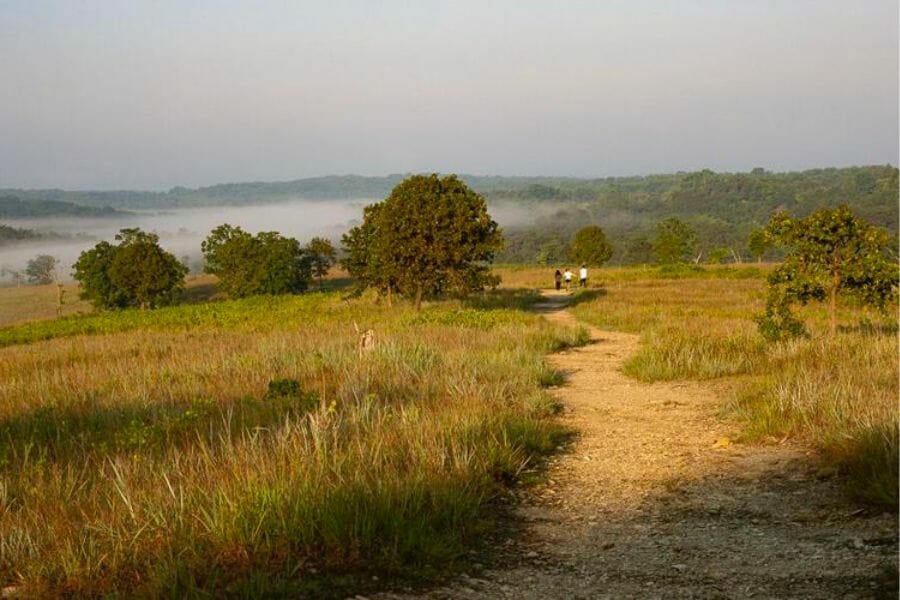
5100 Deer Park Rd, Owings Mills, MD 21117
To find Maryland crystals, look no further than Soldier’s Delight Natural Environment Area. This place was once mined for chromite, a mineral used in the production of stainless steel. While the mining operation is no longer active, the abandoned mine pits and tunnels offer a unique opportunity for rockhounds to explore and discover a variety of crystals.
Soldier’s Delight is part of the Piedmont Plateau, an area known for its complex and diverse geology. The rocks in this area date back to the Precambrian era, and have been subjected to intense heat and pressure over millions of years. This has resulted in the formation of a variety of crystals.
To get to Soldier’s Delight, head to Owings Mills in Baltimore County. The natural environment area is open to the public for hiking, birdwatching, and, of course, rockhounding.
Where we found crystals at Soldier’s Delight Natural Environment Area
We suggest exploring the old chrome mines in Soldier’s Delight Natural Environment Area to find different kinds of crystals, especially Magnesite and Quartz.
Funks Pond Recreational Area
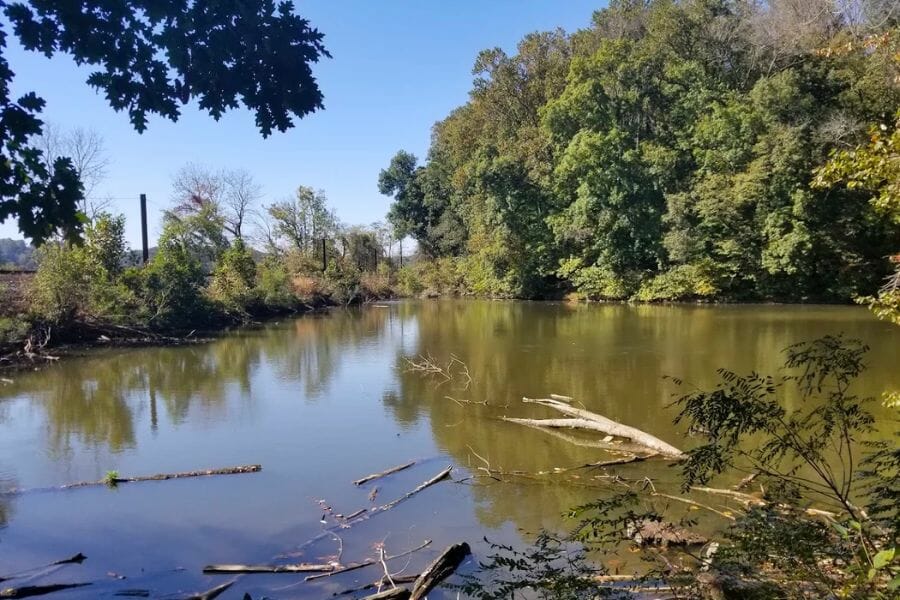
Conowingo, MD 21918
Funks Pond Recreational Area was originally a quarry that was used to mine gneiss, a type of metamorphic rock commonly used for building materials. Today, it is a recreational park that offers a range of outdoor activities, including hiking, fishing, and even rockhounding.
The area is located in the Piedmont Plateau region, which is known for its complex geology and diverse range of minerals. The rocks in this area are part of the Baltimore Gneiss Formation, which is a type of metamorphic rock formed from ancient sediments that have been subjected to intense heat and pressure over millions of years.
Getting to Funks Pond is easy. Located just south of Interstate 70 in Frederick County, the recreational area is open to the public year-round, so you have plenty of time to plan your visit.
Where we found crystals at Funks Pond Recreational Area
The gravels, tailings, and pits of Funks Pond Recreational Area contains some of the most magnificent samples of Magnesite and Serpentine crystals.
Our Other Favorite Places For Crystal Hunting
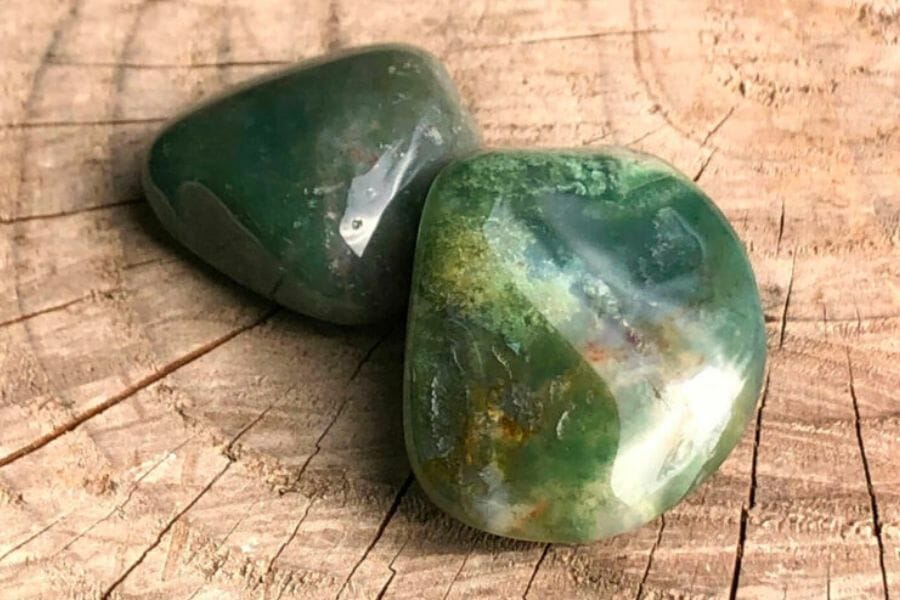
We had quite a difficult time selecting the top 5 places that we already shared with you here, because there are plenty other great crystal hunting sites in our state. Maryland may be small, but it’s packed with these natural wonders! You can even find amazing Maryland geodes in some of these areas:
Where you can find crystals for free in Maryland
Firstly, we’re sharing the free-to-search places here, where you don’t have to spend anything to find and dig for crystals.
| County | Location |
| Allegany | Old mining town of Roberts and on west side of Wills Mountain |
| Anne Arundel | Area of North Ferry Point, in river bank lignite seams |
| Baltimore | At the Bare Hills in metropolitan district |
| Cecil | Abandoned State Line Pits |
| Harford | At the area quarries of Cambria, Broad Cheek, Cardiff, and Deer Creek |
| Howard | Exposures of Bear Island in the Potomac Gorge |
| Montgomery | Area quarries of Hunting Hill |
| St. Mary’s | Point Lookout area |
| Washington | At the Cavetown Quarry |
Other great places to dig for crystals
As you may be aware, some of the best places to find crystals require a certain fee. If you’re open to it, here’s a list of some of them. Take note, the fees may change (or even be waived) depending on the season, so reach out to the place before heading out.
| County | Location |
| Baltimore | Area quarries or mines in pegmatites |
| Carroll | At the Springfield Mine in Sykesville area |
| Frederick | At the Mountain View Lead Mine, Repp Mine, Dolly Hyde Mine, and Liberty Mine |
| Howard | At the Day Mine, old Maryland Mica Mine, and on the Arrington property at Maryland Mine |
| Prince Georges | Beltsville area iron mines |
The Best Crystal Shops In Maryland
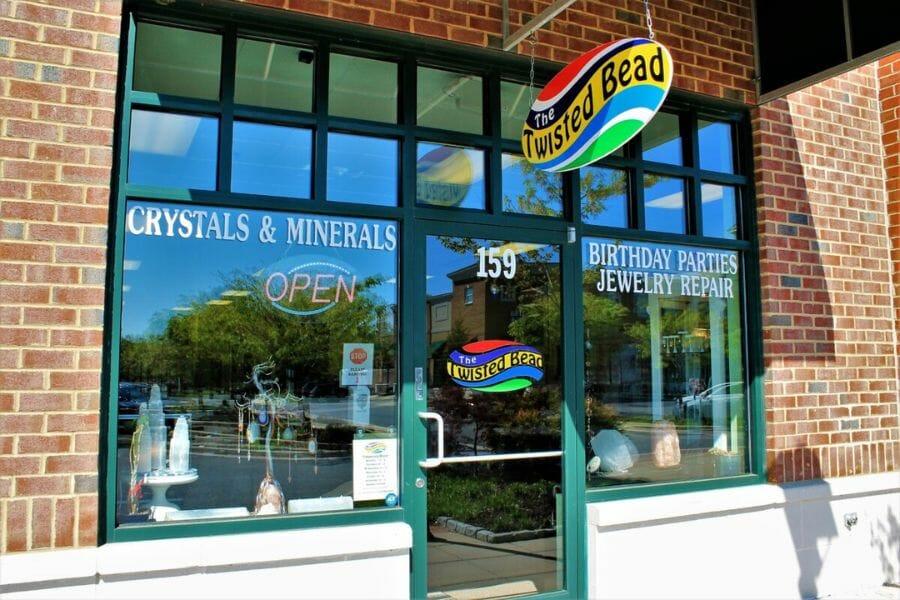
Who wouldn’t love to have all the time— and energy— in the world to search for crystals, right? If you don’t have much of these but still want to take home these natural wonder, you can always checkout the local crystal shops in Maryland. Here are some of the best ones we found for you:
- Crystals, Candles & Cauldrons – 927 W 36th St, Baltimore, MD 21211
- The Crystal Fox – 311 Main St, Laurel, MD 20707
- Zen & Crystals – 208 West St, Annapolis, MD 21401
- The Twisted Bead and Rock Shop – 159 Mitchells Chance Rd, Edgewater, MD 21037
- Caldron Crafts – 6611 Baltimore National Pike, Catonsville, MD 21228
- The Enchanted Fae – 109 University Blvd W, Silver Spring, MD 20901
- Crystal Shop: Moon Beaming Star Water – 8200 Brink Rd, Gaithersburg, MD 20882
- Enchanted Chest – 5210 Silver Hill Rd Suite B, District Heights, MD 20746
- Zinzuedo Infinite Wellness – 8232 Philadelphia Rd, Rosedale, MD 21237
- Earthy Elements – 33 N Market St, Frederick, MD 21701
Additional places to find crystals in nearby states
If you’ve already tried all of our recommendations above or are planning a trip out of the state, you should check out our guides for neighboring states:
If you have any recommendations we haven’t covered, please leave them in the comments below!


